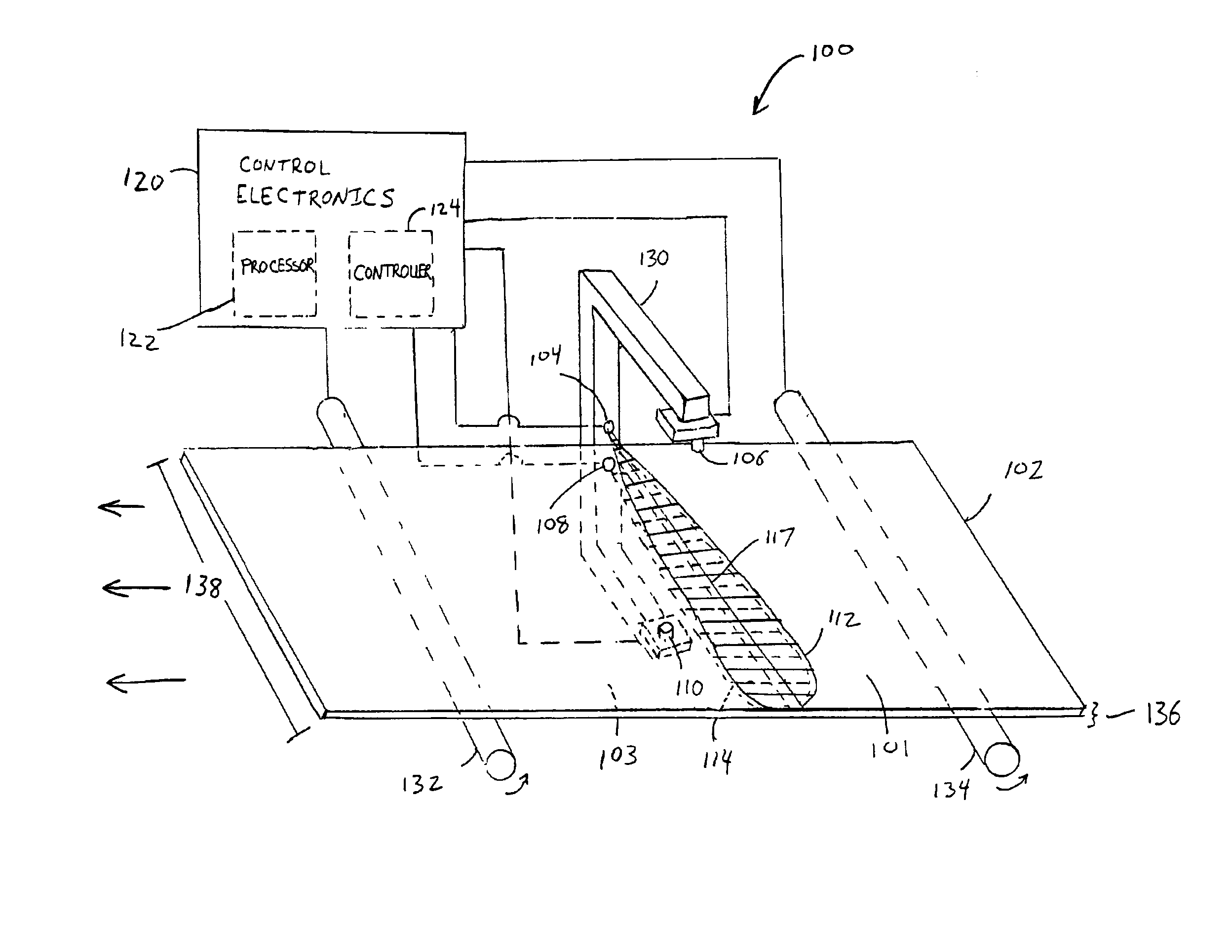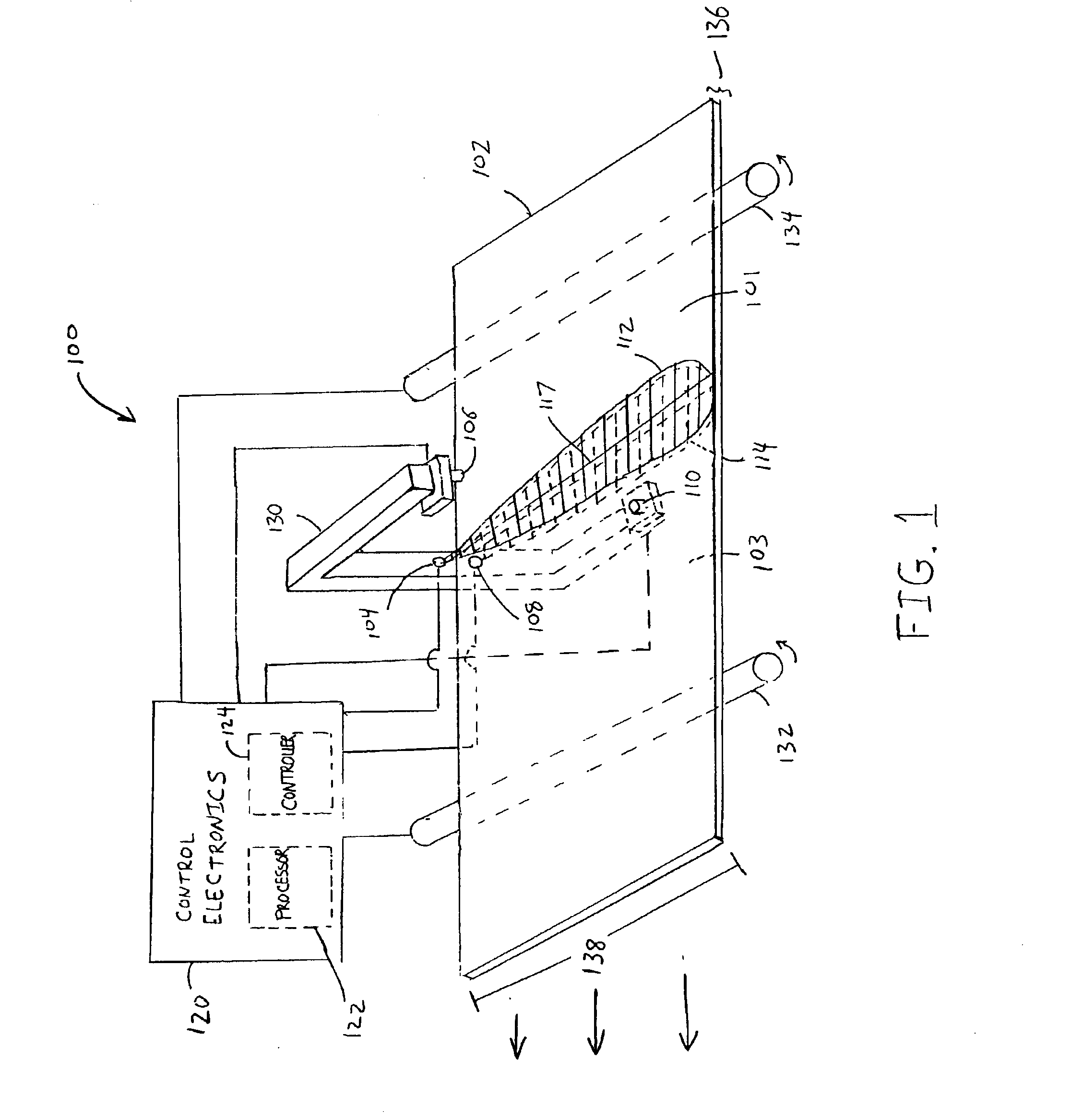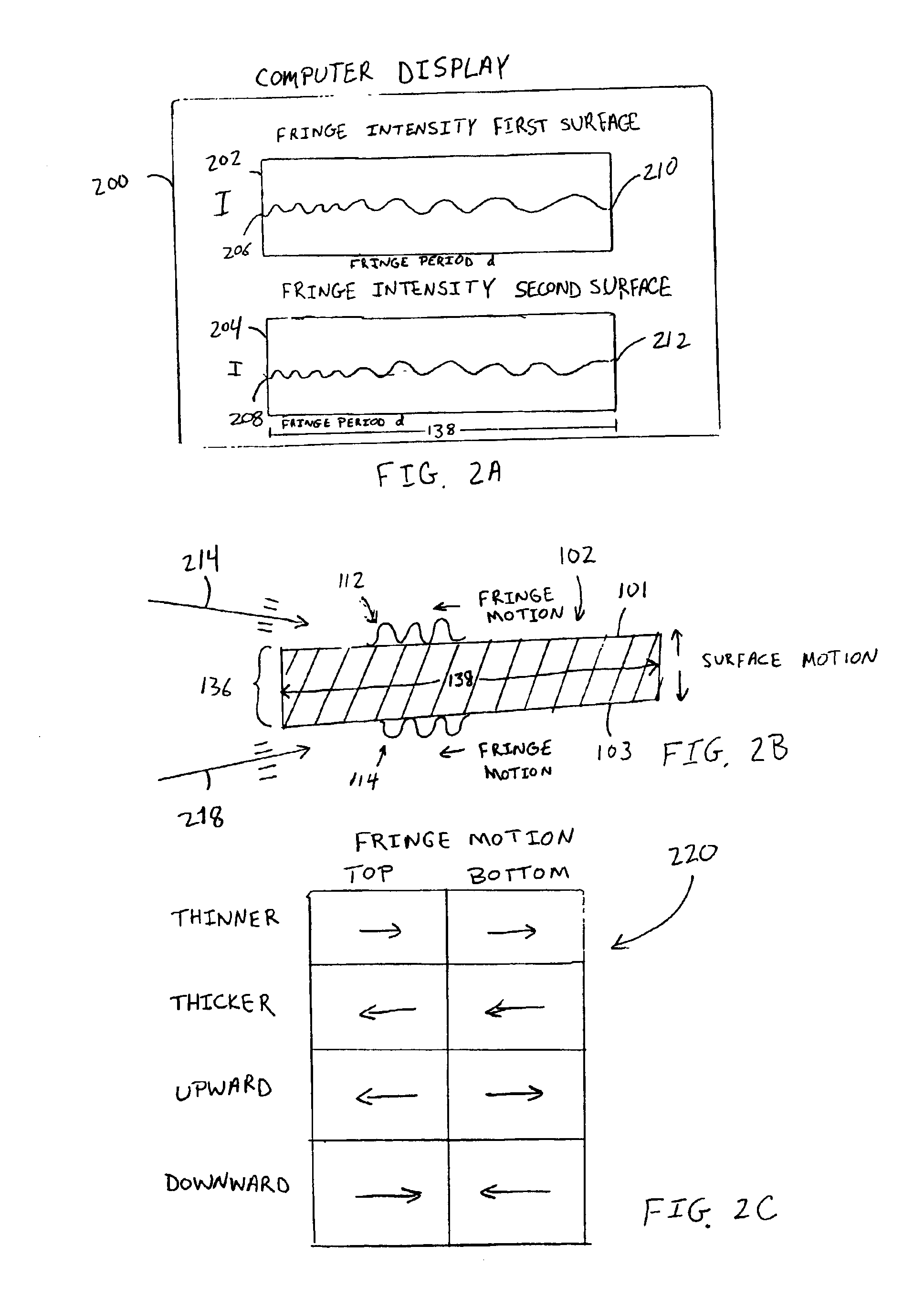Apparatus and methods for optically monitoring thickness
a technology of optical monitoring and thickness, applied in the field of surface measurement, can solve the problems of undesirable surface contact solutions, adverse effects on the quality and repeatability of stamped sheet metal components, and disadvantages of techniques
- Summary
- Abstract
- Description
- Claims
- Application Information
AI Technical Summary
Benefits of technology
Problems solved by technology
Method used
Image
Examples
Embodiment Construction
[0028]While describing the embodiment of the invention, reference will be made to “sources” and “sources of radiation.” These terms are meant to refer to any source of radiation, including highly localized sources of radiation.
[0029]A preferred embodiment of the invention is illustrated in FIG. 1. The system 100 is shown as monitoring the thickness of a sheet of material 102 passing through the system 100. In alternate embodiments, the material 102 is steel, plastic, rubber, lumber, paper, or the like. Generally the material 102 is produced by high speed extrusion, rolling, drawing, casting, sawing, or other similar techniques in which the output is carried along a conveyer-type apparatus. The system 100 comprises a first source of radiation 104 and a first detector 106. The system further comprises a second source of radiation 108 and a second detector 110. The first source 104 is adapted to project a first fringe pattern 112 onto a first surface 101 of the sheet of material 102. T...
PUM
 Login to View More
Login to View More Abstract
Description
Claims
Application Information
 Login to View More
Login to View More - R&D
- Intellectual Property
- Life Sciences
- Materials
- Tech Scout
- Unparalleled Data Quality
- Higher Quality Content
- 60% Fewer Hallucinations
Browse by: Latest US Patents, China's latest patents, Technical Efficacy Thesaurus, Application Domain, Technology Topic, Popular Technical Reports.
© 2025 PatSnap. All rights reserved.Legal|Privacy policy|Modern Slavery Act Transparency Statement|Sitemap|About US| Contact US: help@patsnap.com



